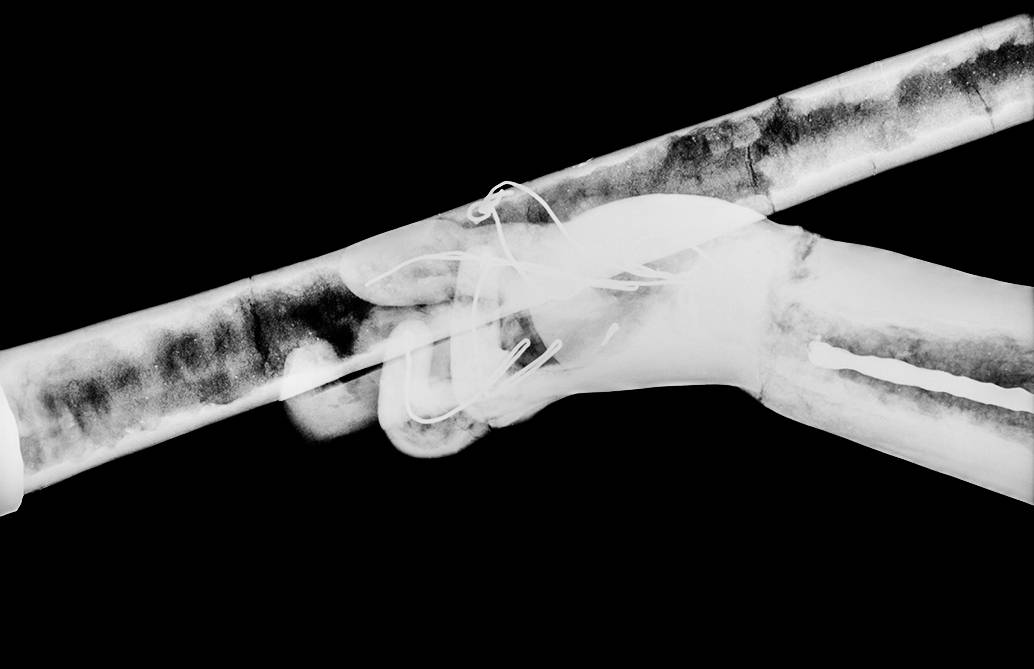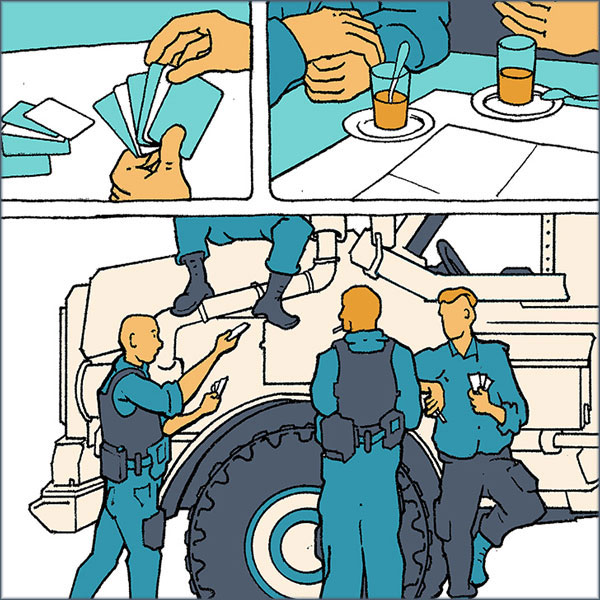ART HISTORY
Men of marble powder
Microscopes and x-rays reveal the secrets of the stucco masters from the canton of Ticino in the 16th and 17th centuries.

This statue in the Church of Saint Eusebio in Castel San Pietro in Ticino is holding a trumpet. The X-ray here shows how metal wires and rods are used to stabilise its hand and arm. | Photo: M. Caroselli et al. (2020)
In the Baroque period, stucco artists from the canton of Ticino were famous all over Europe, and were known as the “Masters of the Lakes”. According to Marta Caroselli of the University of Applied Sciences and Arts of Southern Switzerland (SUPSI), the secret of these artists was “a really deep knowledge of the materials and their properties”. Caroselli has examined 250 samples of their work under the microscope. “Sand, marble powder, lime and gypsum were from the region and nothing special, but the right mixture of the components and their experienced manufacturing are the key aspects”, she says. Analyses of x-rays are also providing new information. The artists first moulded their statues in rough form using iron bars and wires before applying the stucco mortar.




